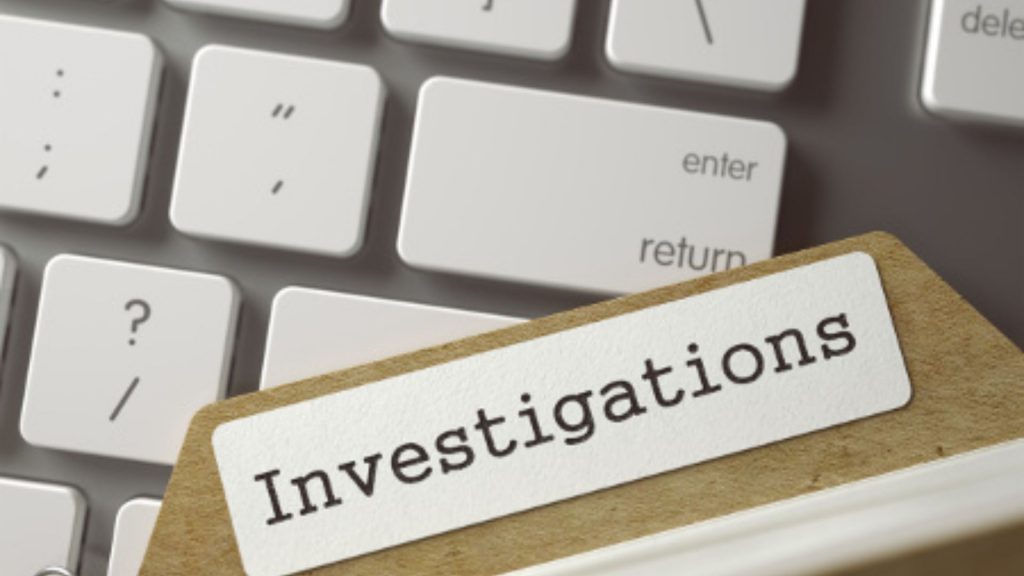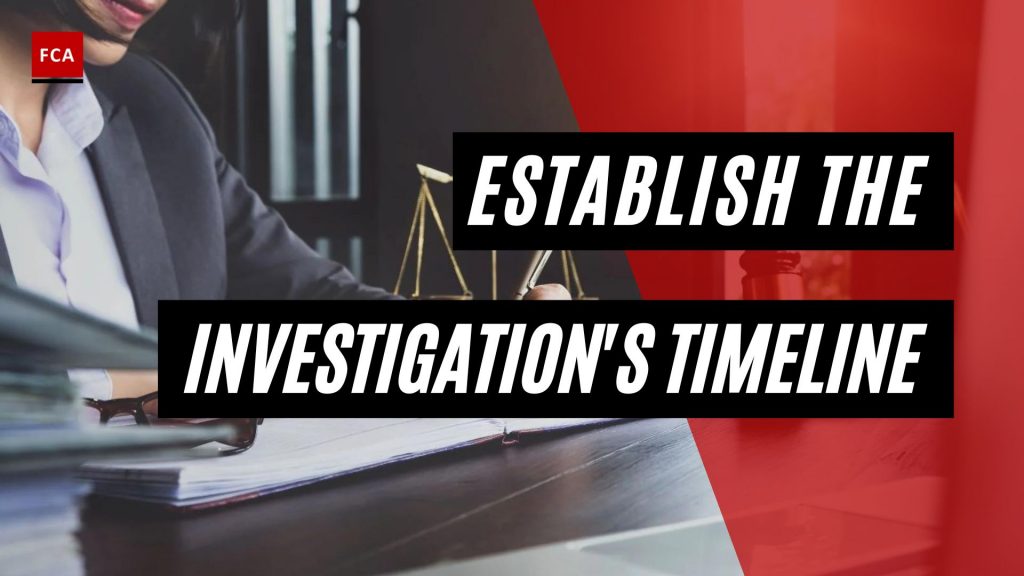Establish the investigation’s timeline. A timeline will present the chronological order in which things happened. There is a time and order for everything, from world history to every problem at a company. For a problem investigation, a timeline provides a convenient way to begin organizing detail. It captures what happened and when. Depending on the complexity of the problem, there may be many different parts that need to be pieced together to understand an issue. Fortunately, there is a time in which each part happened.

Establish The Investigation’s Timeline
A problem may have been an instant when the equipment failed, the line stopped, the person was injured, the collision occurred, or the tank ruptured. That time is when that situation occurred, but some things occurred before the consequence that are relevant to the issue. That detail should be present on a timeline. Written reports sometimes have a section labeled background information to help provide context.
Timeline Format
A simple way to document and present a timeline is a three-column table to capture the date, time, and description. Additional columns can be added as needed to capture more information. Each entry in the timeline is a horizontal row with a time.
Time is captured in a column with the most recent entry at the top. The date and time scale can vary by year, day, minute, or fraction of a second from one row to the next. The requirement is that all entries are in ascending time order down the page from earliest to latest.
Some groups use a horizontal line for their timeline. Graphic designers make some informative and organized horizontal timelines; however, a flat line is not ideal for capturing and editing the information needed in a problem investigation.
A timeline can begin with one entry that is a short description of any part of a problem. If the date and time are unknown, they can be added later. One convenient aspect of a timeline is that it’s linear. There are no parallel relationships on a timeline.
There is an objective straight-line order in which every item fits on a timeline. Each entry has a place before, after, or between the others. For some incidents, a timeline may be sufficient with just a few lines. The timeline’s order is objective, but the amount of detail presented is subjective. It is determined by the severity of the incident and the extent to which the sequence of events for that issue must be recorded.
Documentation With Paper
A timeline can be started on a piece of paper or an electronic file. There are several aspects of Excel, along with some handy shortcuts, that make it a good choice for documenting and presenting a timeline.
To add more detail, additional rows can easily be inserted between existing entries, and additional dates can be added. Even when companies require a particular format or written report in Microsoft Word or PowerPoint, it’s still easier to build the timeline in Excel and then copy and paste it into the required file.

Timelines In The Incident Review
During incident interviews, a timeline is an effective way to piece together the details of the matters. People familiar with the incident can pinpoint what happened just before or just after something else happened. Reviewing the timeline is an easy way for people to take part in the investigation. Each person sees the incident from their unique opinion, but that information can all fit into one comprehensive timeline.
As we go deep into a particular issue, it’s normal for people to check their phone to find the date or time of a phone call, text message, or email they recall as part of the incident sequence. They can add a surprising amount of useful information and provide significant clarification when we step through the timeline in detail. Depending on the nature of the incident, a timeline review can be created one person’s recollection at a time or with the whole group.
Linear Time, Nonlinear Problems
A timeline explains when the different parts of a problem took place. Because everything is in time order, a timeline makes the problem seem like it occurs as a straight line. But an incident is the result of different causal paths coming together in a specific way. The cause-and-effect relationships within a problem are nonlinear.
A timeline does not answer the question of why it happened. That question requires the incident to be sorted in cause-and-effect order. By only looking at the timeline, different causal paths are not visible to the problem solver. That is why; the timeline needs to be built separately from cause and effect. To better understand how cause and effect are essential for understanding how to change outcomes.
Benefits Of A timeline
An incident can appear convoluted. A timeline provides an easy way to organize the different parts of an issue in the order in which they took place. Finding that information and piecing it into time order can be an involved process, but it’s a vital part of providing a complete explanation. An investigator uses a timeline to produce a thorough investigation.
A timeline may start basic, but it’s easy to edit and expand as people provide more detail. Time order is also particularly helpful for establishing cause and effect since a cause must occur before its effects. These two views, the chronology of the timeline and the causality of the diagram, provide a complete understanding of when, how, and why things occurred. Though the information should be kept separate, they work together for a more complete explanation of the incident.
Final Thoughts
A timeline depicts the chronological order in which events occurred. Everything, from world history to your personal life story to business problems, has a time and place. A timeline is a simple and convenient way to begin organizing detail for a problem investigation. It describes what happened and when it happened. Depending on the complexity of the problem, many different parts may need to be pieced together in chronological order in order to understand an issue. Fortunately, each part occurred at a specific time or period of time.









